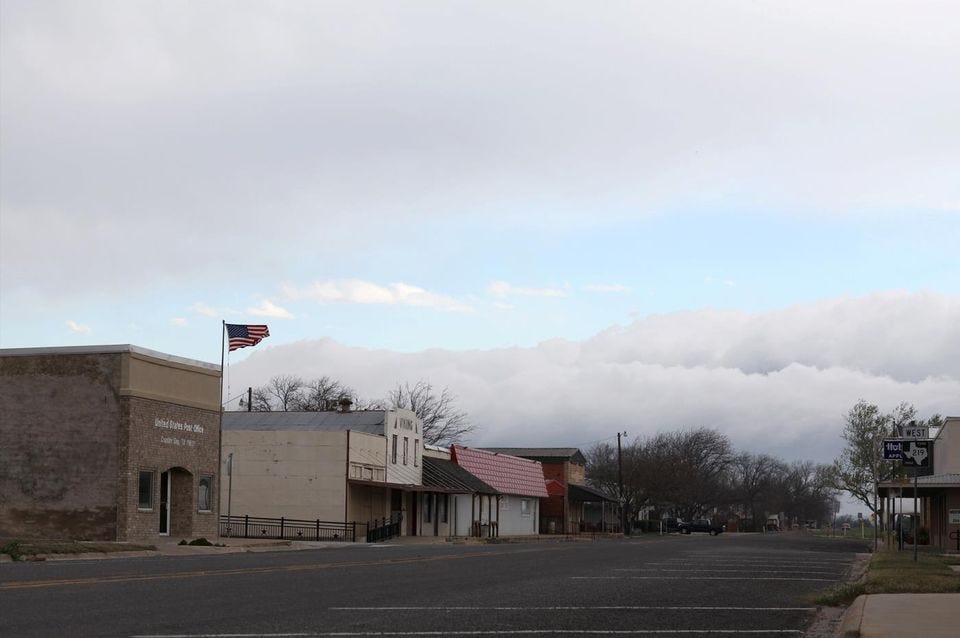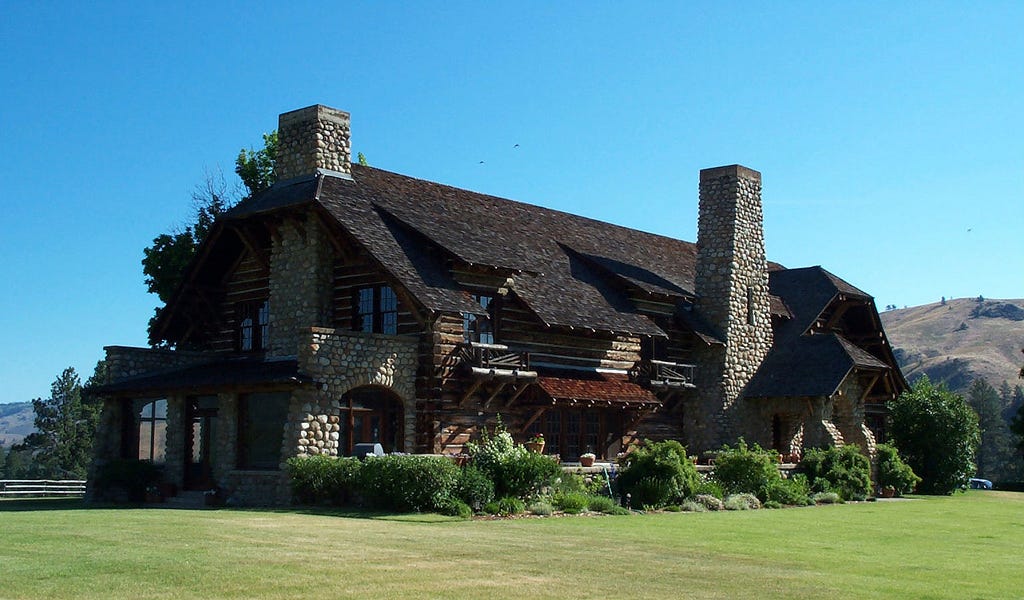Taylor Sheridan grew up in Cranfills Gap, Texas, population 281. It’s a small place, whose population peaked in the wake of the Second World War. He grew up on a family Ranch that was unfortunately lost in the 90s, Sheridan himself saying if it hadn’t gone under “I would still be living there.”1 After dropping out of Texas State and doing odd jobs in Austin, Sheridan would embark on an acting journey that would land him a role in the cult classic Sons of Anarchy. But that was just the beginning for the Texas Cowboy from flyover country.
Cranfills Gap, Texas
It is perhaps unfair to call Sheridan a Hollywood Cowboy, given his very real experience Ranching, but the fact remains that the Western genre has been starving for talent and content. Like film noir, the 60s largely killed the Western, yet the genre has refused to die. Limping along with the help of the spaghetti western, and then the work of Clint Eastwood, it remained on the very outer reaches of public consciousness. After Eastwood’s Oscar winner Unforgiven (itself something of a standalone), the Western has barely made a blip compared to other titanic genres.
The century turned, and a few more westerns came along, some better than others, but all were relatively lackluster and had a pretty mild impact. Meanwhile, Sheridan began parlaying his acting career into a directing career with his wife and son reminding him that he “didn’t want to raise my son in L.A….I didn’t want to have to look him in the eye and tell him I couldn’t take him to a baseball game because I had an audition for a Windex commercial.”2
Sheridan began writing the script for a drama set in the American Southwest, about the Drug Cartels and the attempt of the American Security State to fight them, titled Sicario. It would be his directorial debut, and if you haven’t seen the film I really can’t recommend it enough. Sicario was nominated for Best Original Screenplay by the Writers Guild of America, and 100% deserves it. The film is a tale of murder, geopolitics, of migration, but it is most of all a Western to its core. Sure, the Colt Peacemakers have been traded for Glocks. Sure, horses are replaced by Chevy Suburbans. But upon viewing it you cannot escape the spiritual sense of the American West on display for all to see.
Sheridan’s dream was achieved, in a real way. He had bought a Ranch in Wyoming three years previously, and Sicario was a smash hit. But the Cowboy was far from done. He would follow it up with Commancheria, which was again nominated for Best Original Screenplay by the Guild as well as the Academy Awards, BAFTA, Golden Globe, and a host of others. The film was released under the name Hell or High Water, and once again it was a smash hit while being unapologetically western. He would follow both films up with the final piece of his western trilogy, titled Wind River. For Sheridan the individual, what he had done was nothing short of remarkable. He had, for three years in a row, brought compelling, quality westerns back to the big screen.
But all of this pales in comparison to what might be described as his magnum opus. In 2018, working with the newly minted Paramount Network, he began the TV series Yellowstone. The show follows a family holding onto a massive Montana Ranch, trying to navigate a modern world of development and regional politics.
Chief Joseph Ranch, Darby, Montana. Images rights Mel Pervais
Yellowstone currently holds court as one of the most-watched shows in the nation, with the Season 4 premiere pulling in a staggering 14.7 Million viewers.3 The show is, by cable standards, unbelievably popular, and yet again it is a show absolutely dripping of the West. I could write a whole other article on how Yellowstone speaks to modern America, and maybe I will, but sufficient to say it is beyond a hit - it is the foundation of Sheridan's crusade. What's the secret to his success? Well, aside from sheer excellence, David Glasser (his co-producer on Yellowstone) says
“He’s the real deal. His word is his bond. Loyalty is everything, and then the handshake means something. That’s who he is. And as long as you operate in that world, it’s great. And creatively, he blows my mind every single time.”4
Sheridan is not merely a partisan for the West and for the Western, he is a living, breathing embodiment of it. As a flurry of shows have sought to opportunistically capitalize on Yellowstone’s success, Sheridan has said
“So I don’t know that it’s flattering, because I don’t think they’re doing it because ‘Yellowstone’ is good, they’re doing it because 15 million people watch it. And they’re like: ‘A lot of people watch Westerns. Let’s make Westerns.’”5
The care Sheridan has poured into his magnum opus is very apparent and has been rewarded many times over. And yet, for the Texan, it is perhaps merely being able to tell the story of this incredible land that is the real reward. Sheridan said in the same interview
“For me, a sense of place is so incredibly important. When I wrote ‘Yellowstone,’ I went to Montana. Now, I lived up in that area for many, many years, so I knew it very well.”6
Sheridan himself works on his Ranch and juggles it continuing to be very heavily involved in Yellowstone, which without doubt contributes to the show’s quality resilience. It is not an exaggeration to say that Taylor Sheridan is THE reason for the Western revival, and stands as its chief. Few men stand taller as cultural titans leading Americana through the present trial.
Early, “One filmmaker’s road from a Texas ranch to the red carpet in Cannes,” Austin American-Statesman 2 August 2017
Ibid
Pappu, Sridhar. “How Taylor Sheridan created America's most popular TV show”. The Atlantic. November 10, 2022.
Otterson, Joe. “The ‘Yellowstone’ Empire: How Taylor Sheridan Struck TV Gold by Reinventing the Western,” Variety Magazine, (accessed 14 November 2022).
Ibid
Ibid





